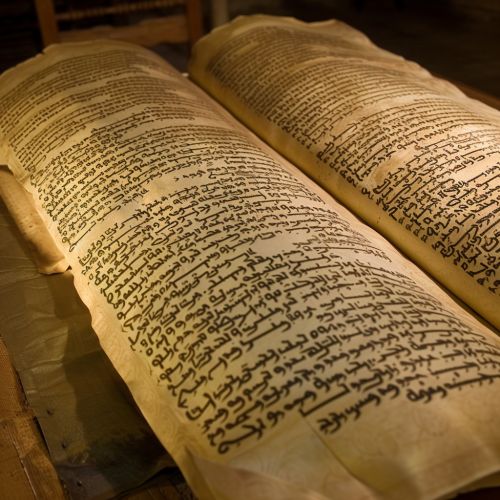Hebrew Bible
Origins and Composition
The Hebrew Bible, also known as the Tanakh, is the canonical collection of Jewish texts, which is also a textual source for the Christian Old Testament. These texts are composed mainly in Biblical Hebrew, with some passages in Biblical Aramaic (in the books of Daniel and Ezra). The form of this text that is authoritative for Rabbinic Judaism is known as the Masoretic Text (MT) and consists of 24 books, while Protestant Bibles divide essentially the same material into 39 books.
Textual History
The Hebrew Bible was not written by a single author, but is a compilation of works from a wide variety of authors and time periods. The process of canonization of the Hebrew Bible is complex and took many centuries. The Hebrew Bible contains texts that were written from the 12th to the 2nd century BCE, reflecting a wide range of ideas and beliefs of the ancient Israelites. The oldest extant manuscripts date from around the 2nd century BCE to the 1st century CE.
Books of the Hebrew Bible
The Hebrew Bible is divided into three main sections: the Torah (Law), the Nevi'im (Prophets), and the Ketuvim (Writings). The Torah contains five books: Genesis, Exodus, Leviticus, Numbers, and Deuteronomy. The Nevi'im are divided into the Former Prophets (Joshua, Judges, Samuel, and Kings) and the Latter Prophets (Isaiah, Jeremiah, and Ezekiel, and the Twelve Minor Prophets). The Ketuvim comprises eleven books, including poetic literature such as Psalms, Proverbs, and Job; the five Megillot (Song of Songs, Ruth, Lamentations, Ecclesiastes, and Esther); and historical books (Daniel, Ezra-Nehemiah, and Chronicles).
The Torah
The Torah, or the Pentateuch, is the foundational text of the Hebrew Bible. It is traditionally believed to have been written by Moses, but modern scholarship sees it as a product of the 6th and 5th centuries BCE. The Torah contains the creation narrative, the stories of the patriarchs, the exodus from Egypt, the giving of the Law at Sinai, and the wanderings in the wilderness up to the brink of entering the Promised Land.


The Nevi'im
The Nevi'im, or Prophets, includes historical narratives and prophetic writings. The Former Prophets contain the Deuteronomistic history, a theological history of the Israelites that serves to interpret the religious significance of historical events. The Latter Prophets contain three major prophets (Isaiah, Jeremiah, and Ezekiel) and twelve minor prophets, shorter books of prophets who left brief accounts of their prophetic visions.
The Ketuvim
The Ketuvim, or Writings, is a miscellaneous collection of works that were not included in the Torah or the Prophets. These include poetic and wisdom literature, love poetry, lament poetry, and historical narratives. The Book of Daniel is an apocalyptic work, and Ezra-Nehemiah and Chronicles are historical narratives that were written in the post-exilic period.
Interpretation and Use
The Hebrew Bible is not just a historical document, but also a foundational text for Jewish and Christian theology. It has been interpreted and used in a variety of ways throughout history. In Judaism, the interpretation of the Hebrew Bible is a central part of the study and practice of the religion. In Christianity, the Hebrew Bible is read in light of the New Testament revelation of Jesus Christ.
